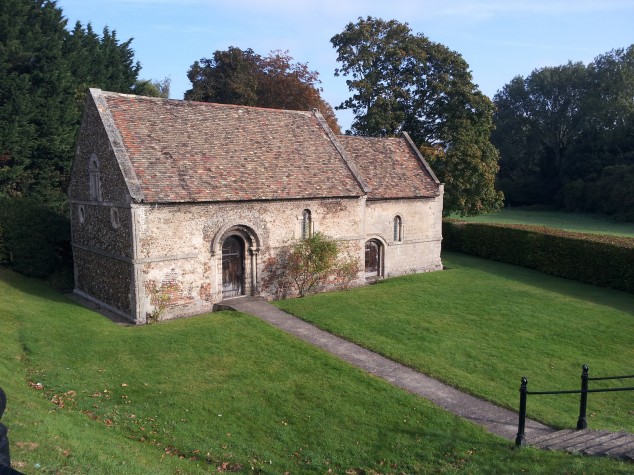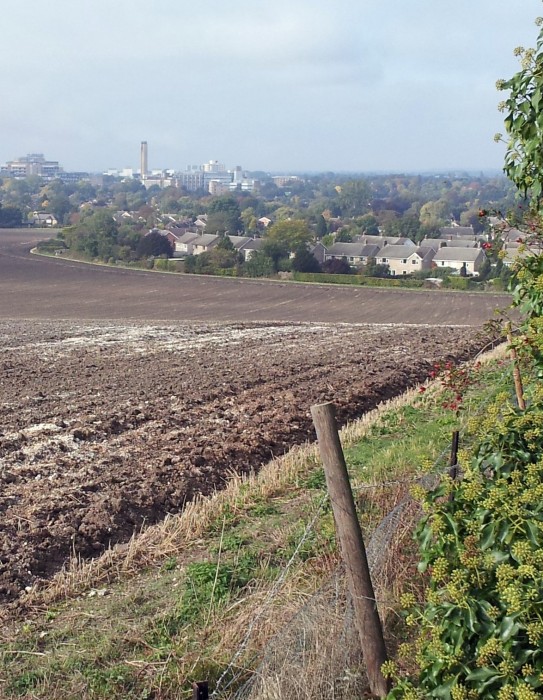Most Cambridge students live and study in an area of about one square mile of Cambridge. This includes the city centre and most faculties, though if you need to go to the West Cambridge site or the Biomedical campus (see below) or you live at Girton the area is quite a bit bigger. So most never see the great majority of the actual city of Cambridge. When my friends from Sidney and I made the great trek all the way to the Zebra pub (now closed) on Maid’s Causeway with the goal of avoiding other students, we thought we were venturing far afield. We actually walked just half a mile (less than a kilometre) and were still comfortably within what most residents would describe as central Cambridge.
While it’s true that the University dominates Cambridge and that without it the city would be either an unremarkable market town or a dull commuter destination, there is a lot more to the place than colleges and faculties. Here are a few things that students may be unaware of in Cambridge, unless they dare to cycle outside the centre.
The Zebra by the way was not what you would call a classy pub but in the 1980s that didn’t matter. Members of an ultra cool band called Device used to hang out there and one of barmaids personified post-punk, in-your-face, I-dare-you-to-ask-me-out aloofness. (We adored her but I don’t think any of us ever did dare to ask her out). The landlord was great fun until he was told by his doctor that unless he stopped drinking he would, well, die. Made miserable and tormented by the sight of his customers enjoying what he could not, he took to closing the pub early and expelling drinkers in mid-pint. Eventually the brewery which owned the pub tired of this and fired him. After various failed attempts at new management, the pub seems finally doomed to closure.
Cambridge airport
On the east side of the city, on Newmarket Road (which goes to the famous horse racing and breeding centre a few miles further on) lies Cambridge airport. It has a low profile because there are very regular commercial flights at presen but the airport is quite big. The runway can take full scale airliners and occasionally one will see a very large military transport plane taking off. The airport provides maintenance services and owner Marshall also has an aerospace design business. Marshall Group is one of the largest employers in Cambridge.
There used to be a commercial service to Amsterdam. Suckling Airways started as a husband and wife team, Roy and Merlyn Suckling. He flew the plane and she was the stewardess. The Cambridge service ceased after 9/11 though Suckling still operates charter flights. From next year there will be a few services to France, Italy and Jersey. My friend, chairman of Love Cambridge, MBA mentor and local businessman Ian Sandison tells me that there are plans to reinstate a flight to Schiphol (Amsterdam) to connect with flights to the US, which would allow us to fly to New York without that tedious journey to Heathrow.
Cambridge County Council
Just at the top of Castle Hill, Cambridge’s only non-flat urban area (there are some modest hillocks to the south, just outside the city limit), lie the offices of Cambridge County Council, known as Shire Hall. Shire is a pre-Norman word for an area of land, usually meaning the same as the Norman word county. (The Shire is also the name of Bilbo Baggins’ home in Lord of the Rings). Cambridgeshire is the county in which the city of Cambridge lies.There is a city council (housed in the Guildhall, Market Square) but many decisions affecting the city are taken at the county council level. Cambridgeshire is a mainly rural county with only two large urban areas, Peterborough and Cambridge. Peterborough has its own “unitary authority” which leaves only Cambridge. There is a constant political tension arising from the fact that the county voters, being rural and rather conservative, tend to elect a Conservative county council. But Cambridge tends to elect Labour and Liberal Democrat local politicians (including the current Member of Parliament, Julian Huppert, who is a Lib Dem). As local government in the UK has very little power, mainly owing to the centralisation of power under the Margaret Thatcher governments, this tension has little practical consequence.
The Leper Chapel
Also on Newmarket Road is Cambridge’s oldest complete building, dating from 1125 (the University was founded in 1209). The tower of St. Benet’s Church, opposite The Eagle pub dates back to 1000-1050 and parts of the Round Church on Sidney Street go back to 1130. Officially known as the Chapel of St. Mary Magdalene, it ran an annual fair to raise money for lepers, to whom it provided food and support, starting around the year 1211, with permission from King John (who signed the Magna Carta four years later). This fair, held on the nearby Stourbridge Common (a large area of grass by the river where the bumps rowing races are held) became the largest medieval fair in Europe. It was held till 1933.
Open to the public only by request, the chapel has hosted a number of events, including a performance of Shakespeare’s The Winter’s Tale, in which I played the part of the King of Bohemia, falsely accused of having “touched forbiddenly” Queen Hermione, the wife of his suddenly paranoid friend King Leontes of Sicilia. The play contains one of the most famous stage directions in English theatre: “Exit, pursued by a bear.” We did indeed have an actor playing a bear.
The Cambridge Biomedical Campus
This does include a number of University buildings but it’s on the southern edge of the city and most visitors never see it, unless they glance out of the train as it’s pulling in from London. This collection of buildings is “one of the most productive concentrations of biomedical scientific research in the world” according to the campus website. At the heart is Addenbrooke’s hospital, which replaced the building that now houses Cambridge Judge Business School. The hospital, the University of Cambridge and the Medical Research Council (MRC) created a plan in 1999 to build by 2020 one of the largest concentrations of healthcare-related talent and enterprise in Europe.
The campus already houses two hospitals, four MRC laboratories, a Cancer Research UK laboratory and several other research organizations in the areas of cellular, genetic and molecular biology. There seem to be cranes permanently adding new buildings for this huge site. It does mean that the hospital has access to world class pioneering research, so Cambridge is quite a good place to be ill.
The Cambridge Blue pub
Most students and visitors to Cambridge, if asked to nominate their favourite pub, would probably choose The Eagle, which is certainly the most famous. It’s an amazing achievement that The Eagle manages to appeal to tourists, locals, and students and lose none of its charm. Though it does get quite crowded.
But Cambridge residents might vote for other pubs. One that would certainly be on their short list is the Cambridge Blue in Gwydir Street, which is one of several Cambridge pubs to have an excellent range of quality British beer and a charming, traditional pub interior. There is also a wide range of foreign beers. Despite the name there is no link to the University. Having said that, there is no town/gown hostility and students are welcome, though it’s unwise to turn up in large groups wearing college scarves or sweatshirts.
Gwydir Street has an annual street party which is enormously popular. Here is a picture of the Cambridge Blue during this summer’s event.







hamza
very very beautiful
Andrea
Ah.. the Zebra Pub. Best chip butties ever. It did seem a long way from College!